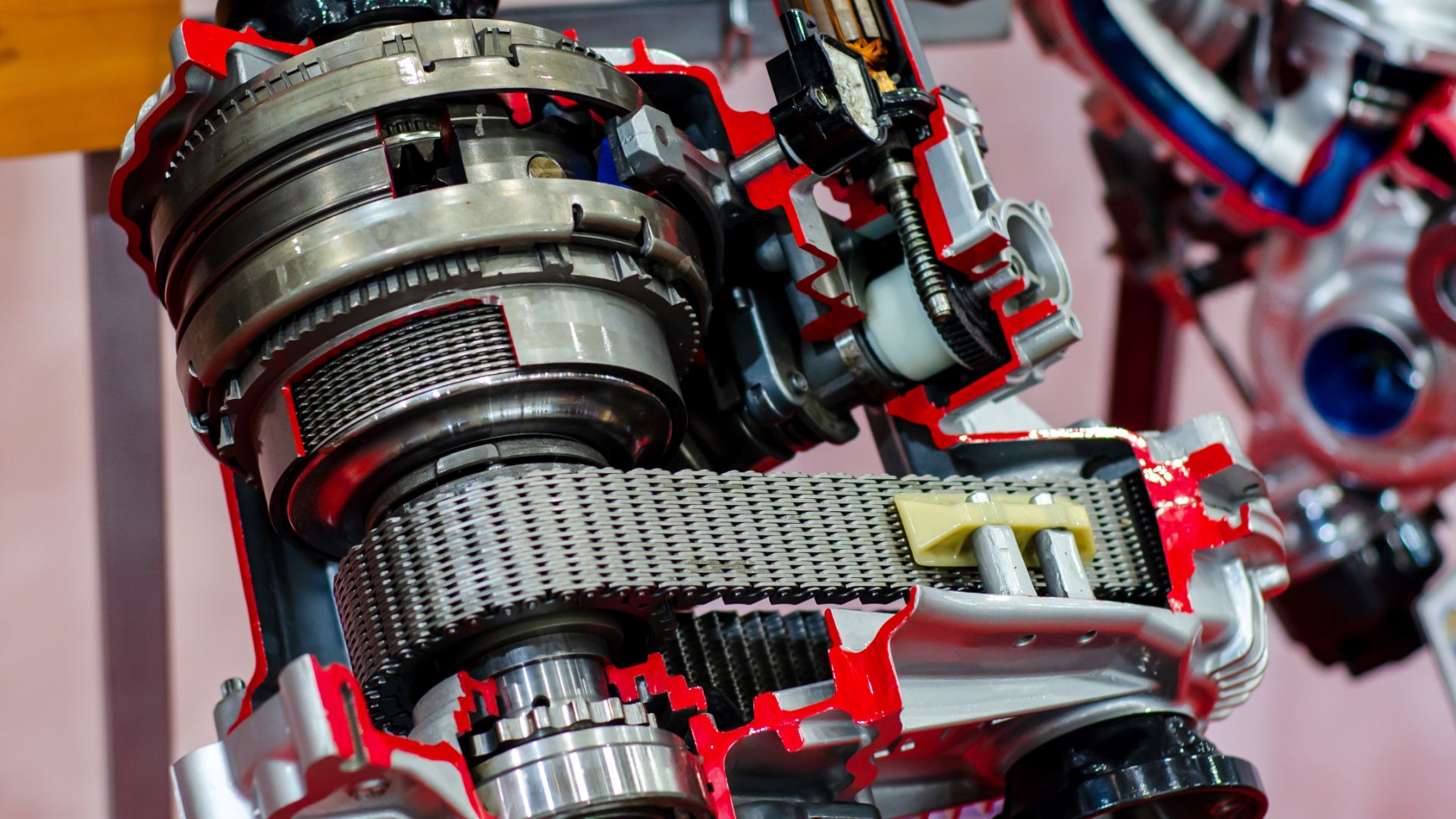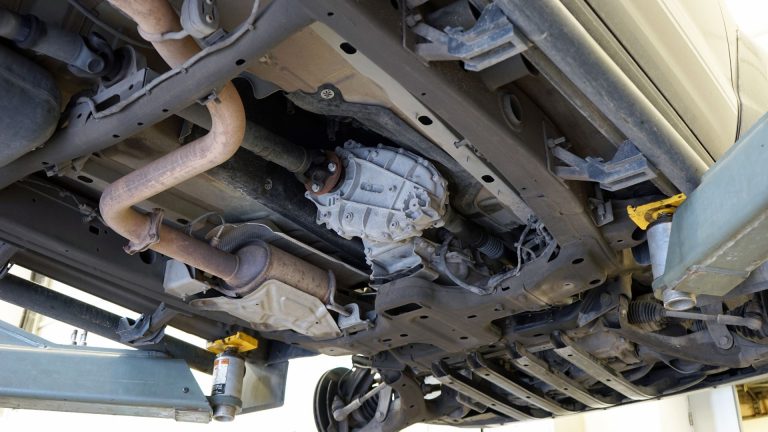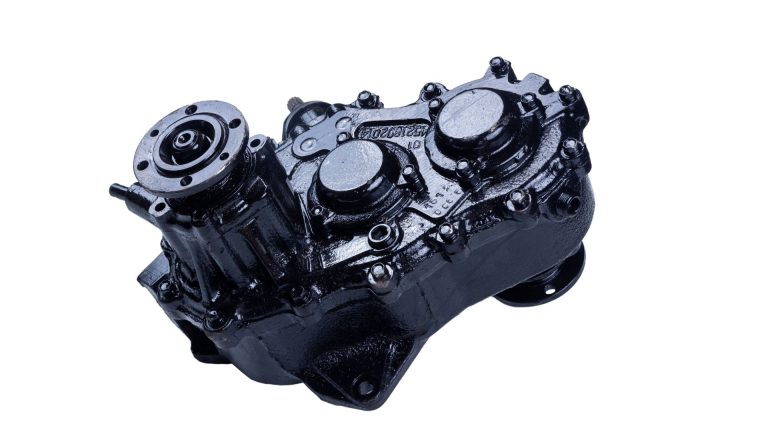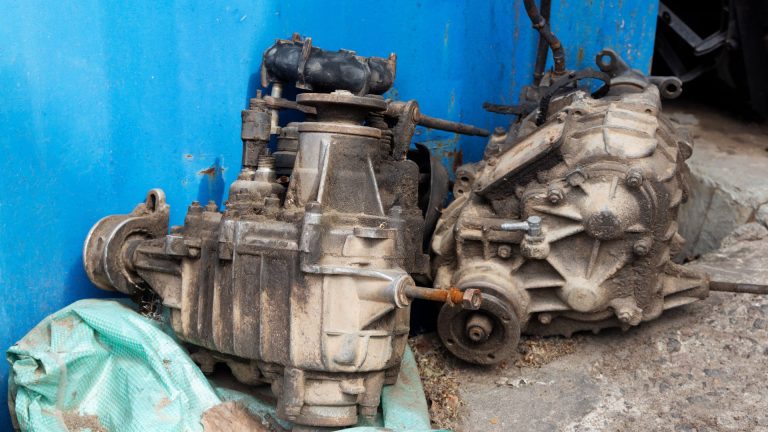What does a transfer case do? — explained
Understand the essential role of a transfer case in your vehicle's performance.

Understanding how engine power gets transferred to your car’s wheels isn’t that simple if you aren’t much of a car guy. Still, there are a few components you can’t escape when it comes to drivetrain terminology, and the transfer case is one of them.
If you own a four-wheel-drive vehicle, you might be wondering – what does a transfer case do? A transfer case ensures an equal torque transmission to both the front and rear axles. They are used to lock the front and rear driveshafts so that an equal amount of engine power is transmitted to them. These are just the basics of transfer case operation, so let’s take a closer look to see what it’s all about.
How does a transfer case work?

A transfer case consists of a series of shafts and gears with a metal housing. Modern transfer cases are equipped with chains instead of gears, as it’s a more convenient way of connecting the shafts. It all starts with the transfer shaft that translates the engine’s power output to the axle of the drive wheels.
That’s how it works in front-wheel-drive or rear-wheel-drive systems, but a four-wheel-drive system requires a device that transmits power to both axles with equal torque. That’s where the transfer case steps in, as four-wheel-drive cars need shafts to transmit engine power to both axles.
It’s important to note that the output shaft of your car’s transmission system acts as an input shaft for the transfer case. To make things simpler, we’ll just refer to it as an “input shaft” for this guide, from the perspective of the transfer case operation.
As the input shaft rotates, it drives the helical gear of the lay shaft or connects with it via a chain in some modern transfer cases. The lay shaft is a mid-shaft or a connection shaft between the input shaft of the transfer case, and the output shaft of the transfer case.
There are two dog clutches on the sides of each shaft, and they determine the power output. When these clutches aren’t engaged, the rotation of the input shaft transfers to the output shaft through a lay shaft. This type of rotation causes the vehicle to act as a two-wheel drive system with high torque output.
Once the clutches engage, the input and output shafts rotate at the same speed for low torque output. At this point, the vehicle is still driving as a two-wheel drive. This is the magic of the transfer case, since you have an optional two-wheel drive system, and an additional shaft to make it a four-wheel drive which we’ll explain below.
The role of an auxiliary output shaft
So, we’ve discussed how the transfer case shafts translate engine power from the transmission shaft to the drive axle. So, how is the power transferred to the other axle to make it a four-wheel drive system? Well, there’s an auxiliary output shaft that sends an equal amount of torque to the front wheels to match the torque on the rear drive axle.
The output shaft connects directly to the rear differential, and it has a fixed gear that rotates along with the shaft. Here, it’s important to note a few other crucial parts – the sleeve and the auxiliary output shaft.
The sleeve on the output shaft bushing connects to the auxiliary output shaft via the drive chain. Now, this shaft connects to the front differential, and if the clutches are engaged and the sleeve’s chain rotates the auxiliary shaft, the power gets sent to the front axle.
There’s usually a shifting mechanism that controls the rotation of these shafts and the engagement of the clutch depending on the drive system you aim for.
Part-time and full-time transfer cases

Now that you know how a transfer case works, it’s time to go over the main types – a full-time and a part-time transfer case. As you could have seen, there’s the ability to use a transfer case to lock the torque transmission to all four wheels or limit your drive to two wheels.
So, a part-time transfer case lets you do just that – you can shift between a two-wheel drive and a four-wheel drive system. This is convenient as it affects lower fuel consumption if you are only driving on a single-drive axle.
It also lets you adjust your drivetrain accordingly to the road conditions, and switch to four-wheel drive when suitable. On the other hand, a full-time transfer case locks the shafts with engaged clutches and the auxiliary shaft sleeve so that torque gets equally split between the two axles.
Of course, for the power distribution to both axles to work properly, all the drivetrain components need to be in a good shape. So, if you spot bad CV joint symptoms, transmission slipping, or damage on the axles themselves, you might not feel like the torque is distributed in a 50:50 manner.
Active transfer cases
Another type of transfer case that’s mostly used in modern cars is an active transfer case. It works like the part-time transfer case but keeps the car in a four-wheel drive mode once the computer recognizes a lack of torque on an axle.
So, it’s like a hybrid version of the part-time and a full-time transfer case, since it mostly keeps the car in 4WD mode when necessary. It can still shift between the modes as it suits the car and the axle torque readings, and you don’t have to lift a finger since the system operates electronically.
Possible transfer case problems

While a transfer case is an amazing device for a four-wheel drive vehicle, it sadly also comes with a few downsides. A transfer case in your car can go bad, and if that happens, these are the main symptoms you might experience:
- Shifting difficulties
- Strange noises
- Difficulties staying in the 4WD mode
If you have a manually-shifting transfer case, you’ll possibly have difficulties shifting from two-wheel drive into four-wheel drive mode if the case goes bad. You might also spot a leak from the transfer case housing, and struggle to keep your car in the 4WD mode.
Another sign of a bad case is humming or grinding noises coming from it, and these can’t be a good sign. Regular wear and fluid leaks are the most common triggers of bad transfer cases or transfer case problems, so that’s another thing to keep an eye out for.
Our take
In the end, this guide hopefully answers your question of “what does a transfer case do” and points to the overall importance of this device. Without it, you wouldn’t be able to enjoy an equal torque supply to both drive shafts in a 4WD mode.
So, if you own a four-wheeler, make sure that the transfer case is always properly maintained to prevent shifting problems or your car from getting out of the 4WD mode.
What happens when a transfer case goes out?
When a transfer case goes out, it gets difficult to keep your car in a four-wheel drive mode and shift between drive modes.
How do I know if my transfer case is failing?
You can know that your transfer case is failing in case of loud humming and grinding noises, shifting problems, or difficulties keeping your car in a 4WD mode.
Can you drive with a broken transfer case?
You shouldn’t drive with a bad or broken transfer case since you won’t be able to properly shift into a 4WD mode and further damage may be done to other drivetrain components like axles, joints, or even the transmission.
What is the main purpose of a transfer case?
The main purpose of a transfer case is to transfer engine torque equally to both the front and the rear axle.